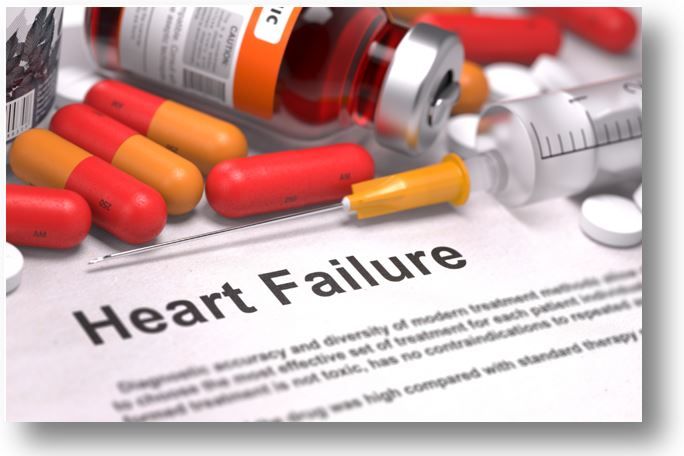SGLT2 Inhibitors May be "Optimal" Treatment for HFpEF, HFmrEF, a New Meta-analysis Suggests
SGLT-2 inhibitors and drugs to treat HFrEF were compared for efficacy in patients with HF with LVEF ≥40%.

SGLT-2 inhibitors may be the “optimal” class of drugs for treatment of patients with heart failure with preserved ejection fraction (HFpEF) or HF with mildly reduced EF (HFmrEF), suggest findings from a new meta-analysis designed specifically as a head-to-head comparison between SGLT-2 inhibitors and the other drug classes traditionally used to treat this heart failure population with less severe disease.
The findings support the most recent US clinical guideline recommendations for use of the SGLT2 inhibitor class.
The analysis found that none of the drug classes studied were associated with reduced risk of mortality in HFpEF or HFmrEF, however, SGLT2 inhibitors, angiotensin receptor-neprilysin inhibitors (ARNIs), and mineralocorticoid receptor antagonists (MRAs) were associated with a significant decrease in hospitalization for HF and the greatest decrease was seen with SGLT2 inhibitors.
As context for the research, meta-analysis authors from Department of Cardiology, The Second Affiliated Hospital of Soochow University, Suzhou, China, cite 3 decades of continuous progress in pharmacologic therapy for heart failure with reduced ejection fraction (HFrEF), noting that incremental use of combinations of MRAs, ARBS, angiotensin converting enzyme (ACE) inhibitors, and β-blockers, recommended by US and European clinical guidelines, has benefitted these patients significantly.
Results of large-scale clinical trials on medical therapy for HF with higher ejection fraction, however, have been neutral in terms of the composite outcome of cardiovascular (CV) death or HF hospitalization. And yet, based on just marginal benefit, guidelines continue to recommend them.
The EMPORER-Preserved trial, published in 2021, demonstrated for the first time that for patients with HFpEF or HFmrEF, the SGLT-2 inhibitor empagliflozin did significantly improve the composite of HF hospitalization or CV death vs placebo, a finding investigators attributed to a decrease in HF hospitalizations without a decrease in mortality. SGLT2 inhibitors are now preferentially recommended in the latest US guideline to treat HFpEF or HFmrEF.
SGLT2 inhibitors are now preferentially recommended in the latest US guideline to treat HFpEF or HFmrEF.
In the absence of any direct comparative studies of SGLT2 inhibitors and traditional HF drug classes to treat HFpEF or HFmrEF, the research team used a bayesian network meta-analysis to compare outcomes associated with different combinations of all the drugs.
Data were retrieved in a search of PubMed, Embase, and the Cochrane Central Register of Controlled Trials from inception to October 2021 for randomized clinical trials with follow-up of >3 months of adult patients with symptomatic HF and LVEF of ≥40%. Interventions of interest were ARNIs, MRAs, ACE inhibitors, ARBs, SGLT2 inhibitors, and β-blockers. Placebo was considered a seventh intervention class.
The primary outcomes of interest included all-cause and CV death and first hospital admission for HF, associated with different drug combinations for the treatment of HFpEF and HFmrEF.
After screening, investigators had a total of 19 randomized clinical trials comprising 20 633 patients with HF and LVEF of ≥40%. Population characteristics, including age, sex, obesity degree, hemodynamics, and LVEF, were reported as similar across the 7 different intervention classes. Overall cardiac function was primarily concentrated in NYHA class 2 and 3, according to the study.
FINDINGS
The analysis found that when compared to placebo, none of the treatments included were associated with a significant reduction in the risk of all-cause death or CV death.
Still, investigators observed SGLT2 inhibitors, ARNIs, and MRAs all had significant associations with a decreased risk of hospital admission for HF compared with placebo:
- SGLT2 inhibitors: HR, 0.71 (95% credible interval [CrI], 0.60 - 0.83)
- ARNIs: HR, 0.76 (95% CrI, 0.61 - 0.95)
- MRAs: HR, 0.83 (95% CrI, 0.69 - 0.99)
Ranking probabilities for the 3 outcomes demonstrated that SGLT2 inhibitors were the most optimal drug class in terms of reducing the risk for HF admission, followed by ARNIs and MRAs.
When they conducted a sensitivity analysis, the investigators found no intervention was associated with a significant reduction in all-cause death or HF hospitalization. They also report, however, that incremental use of the drug classes studied was probably associated with a progressive decrease in the risk of HF hospitalization among patients with HF and LVEF ≥40%.
“Our results are consistent with the latest guideline recommendations,” the authors concluded. “If indicated, SGLT2 inhibitors may be preferentially recommended for patients with HFpEF or HFmrEF.
“The increasing use of combinations of drug therapies," they added, "may be associated with accumulative benefits in terms of HF hospitalization rather than [in terms of] all-cause death for patients with HF and an LVEF of 40% or more.”
Finally, they call for more research that explores the "phenotypic classification and the LVEF cutoff for the efficacy of drug therapies for patients with HFpEF or HFmrEF.”
Reference: Xiang B, Zhang R, Wu X, Zhou X. Optimal pharmacologic treatment for heart failure with preserved and mildly reduced ejection fraction: a meta-analysis. JAMA Netwk Open. 2022;5:e2231963. doi:10.1001/jamanetworkopen.2022.31963